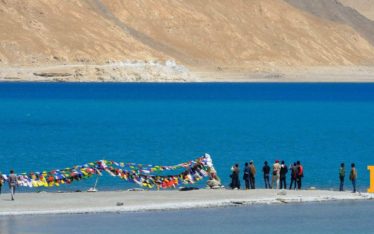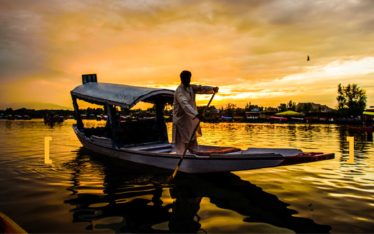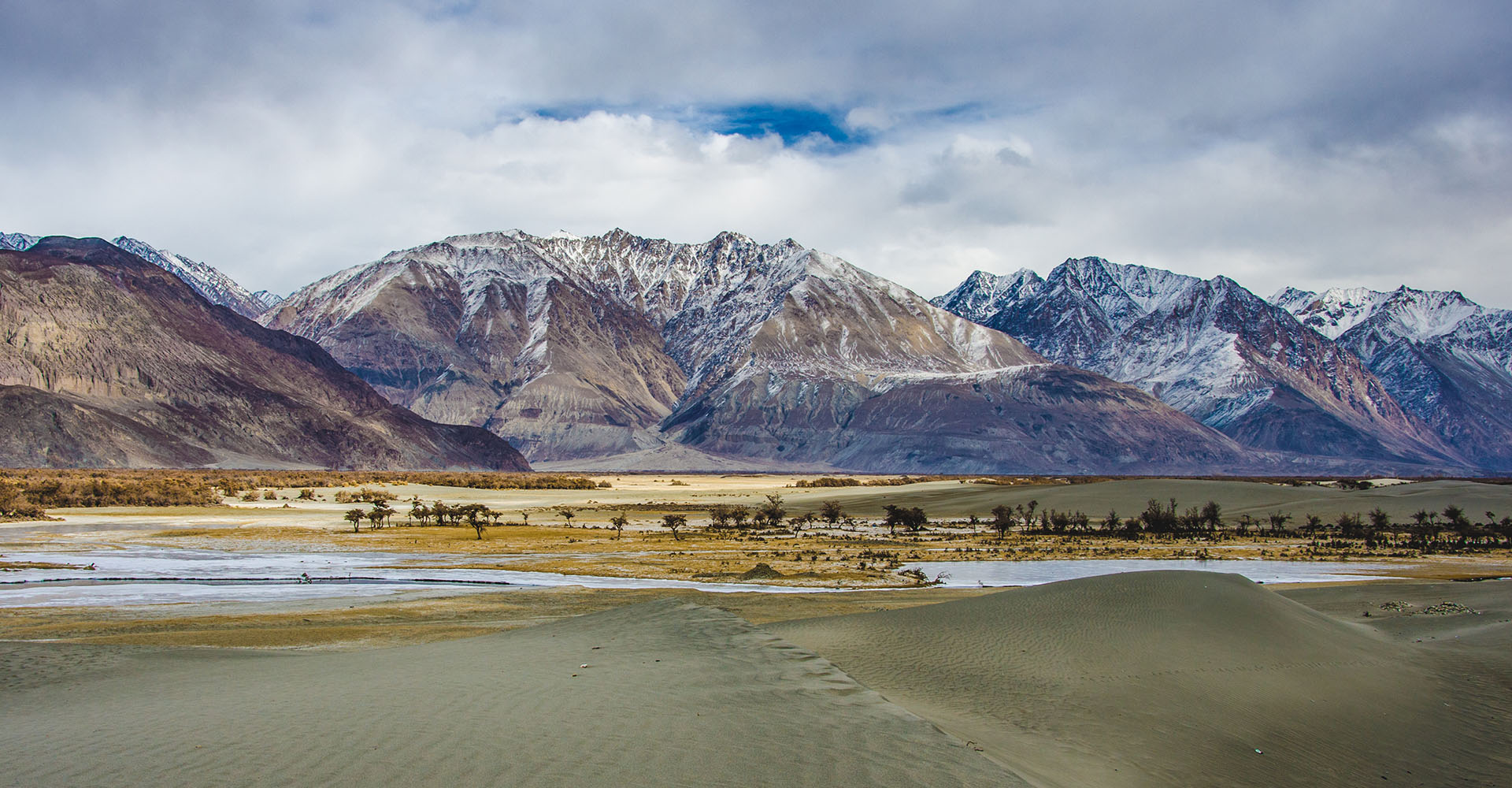


Of Lamas and monasteries, butter tea and gently grunting yaks, there’s much more to Ladakh than just spectacular scenery and deep blue lakes. Though made famous by the odd Bollywood movie every now and then, most of Ladakh still remains largely unexplored. un[travel] Ladakh for its gompas and stupas, for walking to the turquoise Indus as it meets the muddy Zanskar and for its lovely silences that just don’t need to be filled. Spend a morning in prayer with monks at Thiksey or go horse riding beside PangongTso and come back with equally memorable photographs. un[travel] Ladakh for the serenity in solitude and the empty endless roads ahead. un[travel] Ladakh for its tranquillity and stay humbled by the sheer size of this vast cold barren desert. un[travel] Ladakh to tick an item off on your bucket-list or quite simply because you have to see it to believe it.

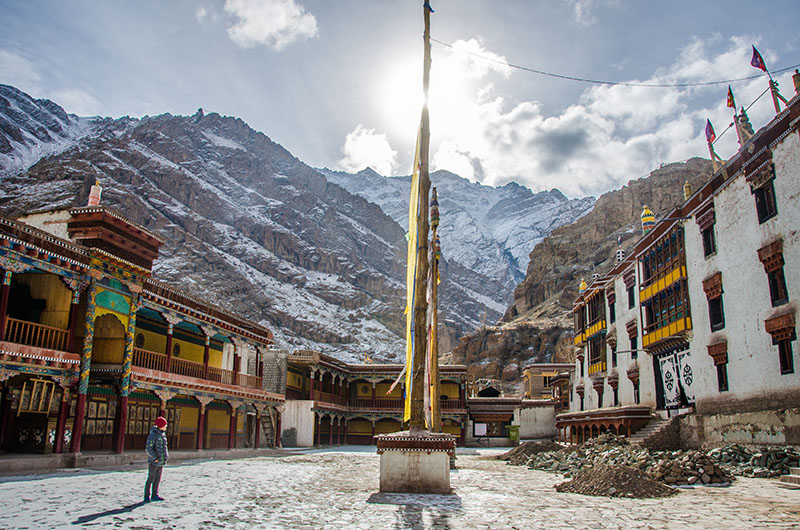
Hemis Monastery
There’s always something tranquil and more spiritual about monasteries in Ladakh than perhaps anywhere else in the subcontinent. From Shey Monastery with its palace ruins and 12-metre tall statue of Shak Yamuni Buddha to Thiksey monastery, one Leh’s largest, fascinating murals and thangka’s add to the sanctity of monks in prayer as you move past gently fluttering flags and stupas. Time your visit for the fascinating Cham mask dance performances by monks here (in October-November). With stunning views of hillocks and the mountains beyond, the contrast of rare green and stark barren lands against spotless blue skies are worth a million pictures.
Hemis Monastery, unlike most of Ladakh’s other monasteries, isn’t visible from afar. Built on a green hill, hemmed between lofty mountains, Hemis is literally India’s Shangri-La. Although founded in 1672, Hemis monastery is said to have existed before the 11th century. Hemis was made famous by claims in the late 19th century that the library contained works on Jesus Christ’s lost years (this was later proved to be false). Cham mask dances here are in Hemis, annually, in June-July for 2 days.
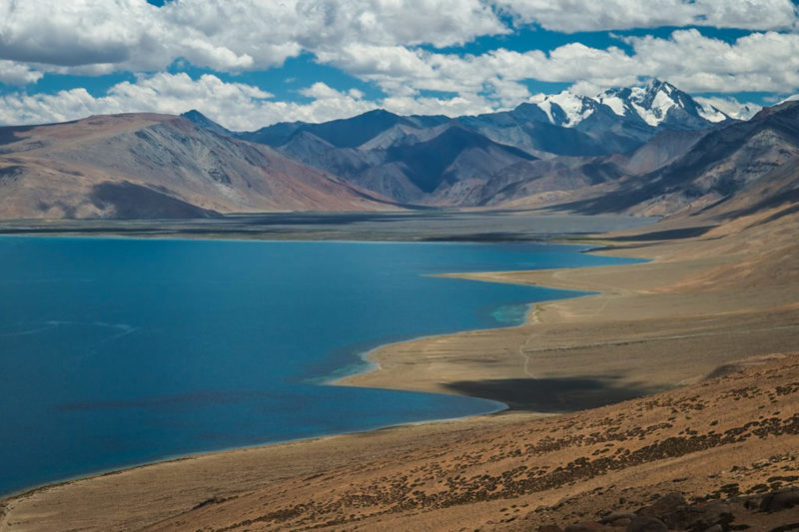
Tso Moriri Lake
Across stunning landscape that Ladakh is now synonymous with, visit Shey and Thiksey monasteries en route to Mahe Bridge. Stop for breathtaking pictures of blue Tso Kar and also the relatively smaller Kyagar Tso. Lake that turns to turquoise and then clear water as you get closer. The eight hours it takes to get here are worth every minute, as soon as you see the serene blue Tso Moriri with mountains beyond. With spectacular reflections of the surrounding mountains and white clouds set against the clear blue sky, Tso Moriri seems like a giant mirror. Camp here for the night under cloudless climes and starry skies.
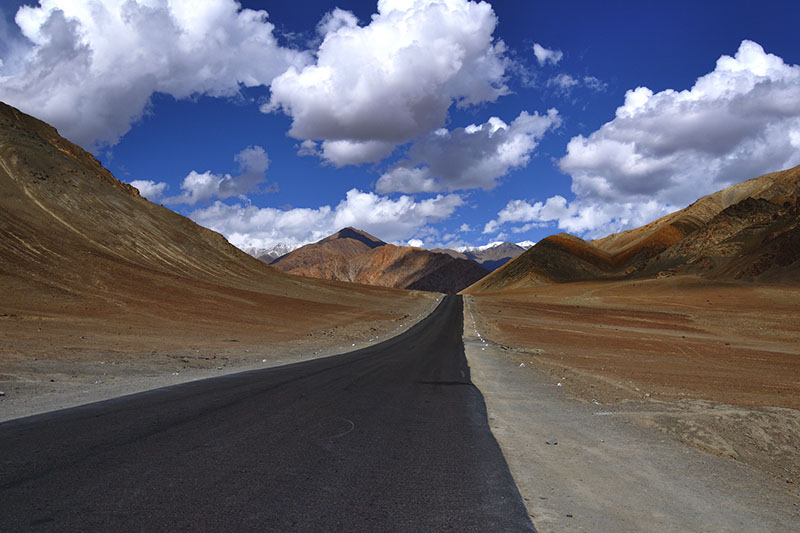
Drive to Sangam past magnetic hill
Clearly not as chaotic as Allahabad’s Sangam, the confluence of rivers here in Ladakh is a big draw for its serenity set in stunning landscape. Just before Sangam, get a glimpse of the optical illusion that makes vehicles climb up without any thrust on seemingly uphill tarmac on the super-charged ‘magnetic hill’. Muddy waters of the Zanskar merge with the turquoise blue of the Indus westwards, turning a brown-tinged shade as it flows out. Stop over at the revered Gurdwara Patthar Sahib with its large boulder with, as legend has it, Guru Nanak’s impression in it. The lovely 11th Century Spituk Gompa Monastery is home to abo
ut 100 monks, ancient masks, beautiful thangka paintings, miniature chortens and idols. If you’re un[travel]ling the area in January, get up to the Mahakal Temple for the unveiling of the Vajrabhairava deity here.

Rafting at Zanskar
Essentially cut off from the rest of the world in winter (thanks largely to unreliable road access because of the weather), Zanskar is a huge must-visit if you’re here in summer. Rafting on the mighty Zanskar, however, takes the adrenaline rush to a whole new level. Deep gorges that the Zanskar leads you through remind you of boat rides through Middle Earth with tall walls of water-cut mountains standing strong and sturdy on either side.
Careful while you steer through Grade 3 rapids that leave you with more than a simple sense of adventure. Hilltop monasteries, rising as a part of the mountain, snow peaks, quaint villages and their stepped greens make for spectacularly distracting views as you hang on to the raft to keep from falling off. Get back to the Sangam a good 3 hours later, probably drenched, but glad for the bright sun and café ideally located nearby.
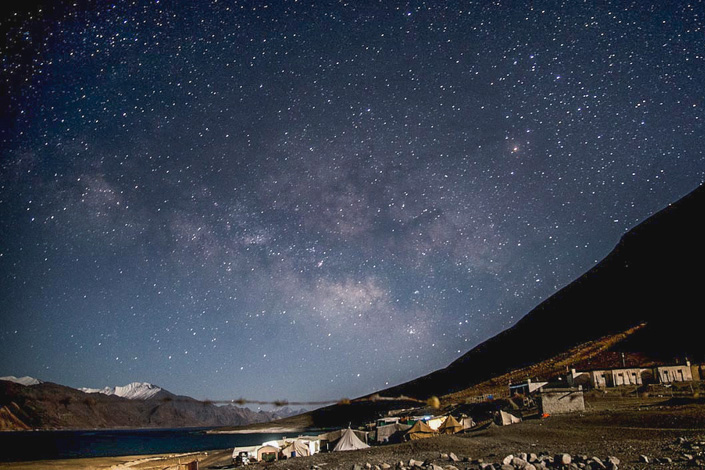
Camping at Pangong Tso
Joseph and his coloured coat don’t stand a chance against the lake of changing colours here at Pangong Tso. Much more than just a spectacular lake at a mindboggling 13,900 feet above mean sea level, Pangong Tso’s serene blue waters were made more famous with Bollywood’s ‘Three Idiots’, leading to a fairly good draw of tourists around the year. Strategically located at the Line of Control between China and India, this salt-water lake attracts numerous migratory birds (think Brahminy ducks and seagulls). A photographer’s paradise, camp by the lake to watch the water turn various shades of blue as the sun moves across the sky.

Local Market in Alchi
A walk through the city, the heritage walk explores the corners and crevices, traces history and art across this ancient town with frequent stops to sample local flavour. Clearly the Namgyal dynasty’s last holding before the Dogras took over in the 19th century, walk through the old city and old residences of ministers and artisans of the king. This old city was almost crumbling before it was declared an endangered site on the World Monuments Watch List, and conservation work was then begun. Stop over at Lalas gallery and Jama Masjid, moving on to Lakruk House and the White Champa Lhakhang.

Mid May to Mid October thus is the best time to un[travel] Ladakh. With clear blue skies, lovely patches of green and a bearable temperature, these months are ideal for travel. Both the Leh-Manali Highway and Leh-Srinagar Highway remain closed for nearly six months between November and April due to heavy snowfall. Avoid the Leh-Manali Highway in October though quite simply because of tricky weather and snowfall that could leave you stranded. Leh remains accessible through air for almost all year round. The Nubra Valley becomes inaccessible but the route to Pangong Tso is more or less accessible in winters as well.
Don’t worry about over-packing woolens, there’s always another layer you might need at night here.

